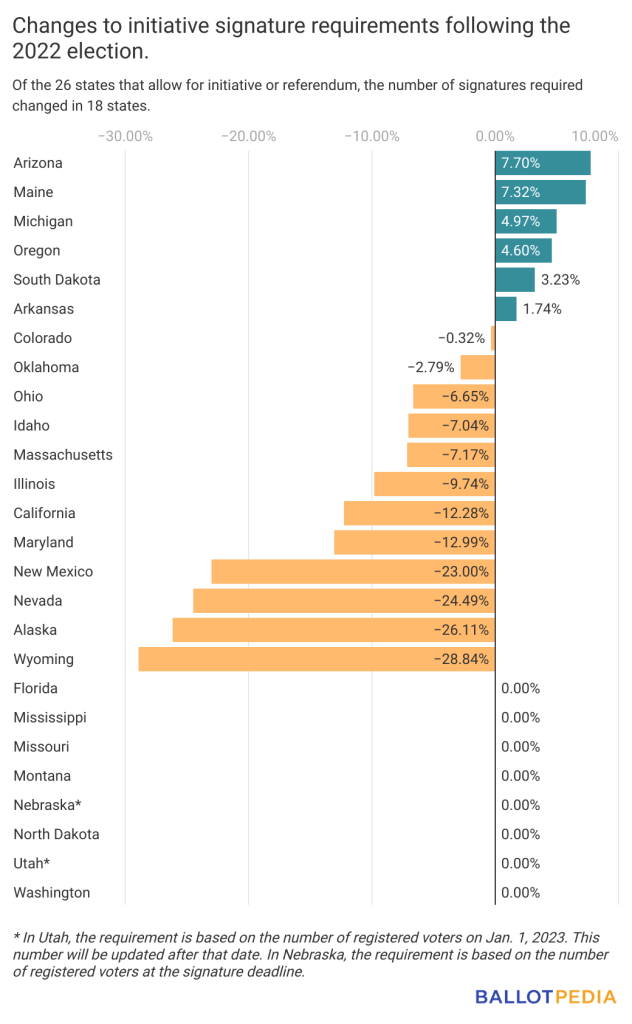Signatures required for ballot initiatives decreased by 7.34% on average following the 2022 election.

Heading into 2023, signature requirements for citizen-initiated measures will change in 20 states. There are 26 states that allow for initiatives or referendums, and in each of these states, the number of signatures required is tied to another number. The most common type of requirement is based on the number of votes in a specific election, such as the gubernatorial election.
Turnout on November 8, 2022, caused signature requirements for citizen-initiated ballot measures to change in 17 states. An additional three states will change their requirements based on the number of registered voters. The average state signature requirement change was a -7.34% decrease. Changes ranged from a -28.84% decrease in Wyoming to a +7.70% increase in Arizona.
Overall, signature requirements increased in six states: Arizona, Maine, Michigan, Oregon, South Dakota, and Arkansas.
And signature requirements decreased in 12 states following the election: Colorado, Oklahoma, Ohio, Massachusetts, Illinois, California, Maryland, New Mexico, Nevada, Alaska, and Wyoming.
The number of signatures required also decreased by -7.04% in Idaho, where the signature requirement is based on the number of registered voters at the time of the election. In Utah, the signature requirement will update on January 1, 2023, based on the number of active voters. In Nebraska, the signature requirement is based on the number of registered voters at the signature deadline.
Arizona had the largest percent increase (+7.70%) in the number of signatures required. In Arizona, the signature requirement is based on votes cast in the 2022 gubernatorial election. Including Arizona, 13 states base their signature requirements on the number of votes cast in midterm gubernatorial elections or another state executive election. The average change in these states was -1.72%, with a range of -12.99% in Maryland to +7.70% in Arizona.
California had the largest decrease in the raw number of signatures required, with the requirement for initiated constitutional amendments decreasing from 997,139 to 874,641 for 2024 and 2026. Arizona had the largest increase in the raw number of signatures required, with the requirement for initiated constitutional amendments increasing from 356,467 to 383,923 for 2024 and 2026.
Wyoming had the largest percent decrease (-28.84%) in the number of signatures required. In Wyoming, the signature requirement is based on turnout at the preceding general election, both presidential and midterm elections. Including Wyoming, four states base their signature requirements on turnout at the preceding general election. As turnout was lower in 2022, a midterm election, compared to 2020, a presidential election, the signature requirement decreased in each of these four states, from −28.84% in Wyoming to -23.00% in New Mexico.
Signature requirements have not changed in six states – Florida, Mississippi, Missouri, Montana, North Dakota, and Washington. In North Dakota, the requirement changes once per decade with the decennial census population count. In Florida, the requirement is based on the number of votes cast for president. The other states base their requirements on votes cast in gubernatorial elections that did not occur in 2022.


